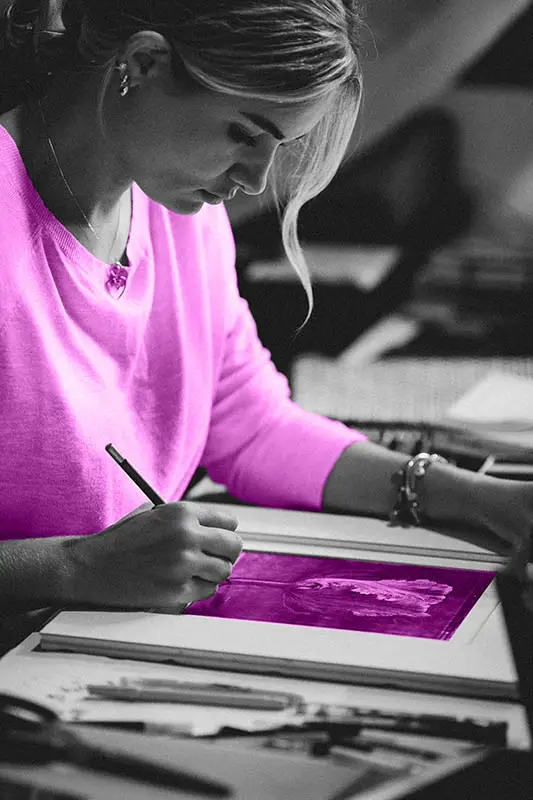

Being Present
Do you ever feel like your mind is elsewhere and that you are not fully being present in the moment? Many of us struggle with this issue every day. But what if there was a way to become more mindful and aware of our surroundings?
Mindfulness can help us live in the here and now, rather than worrying about the past or future. It can also improve our quality of life by helping us stay focused on important tasks while reducing stress levels. In this article, we’ll discuss how mindfulness works, as well as some simple ways to apply it to your everyday life.
Understanding the Basics of Mindfulness: How to be present?
Mindfulness is the practice of being aware and present in the moment while accepting what is. It's about focusing your attention on your feelings, thoughts, and the environment in the here and now. You can focus on what you are doing at the moment, without allowing your mind to wander off into the past or future.
For instance, when you're going for a walk, go for a walk. Really take in your environment, rather than just going through the motions. Start by acknowledging the feeling of your feet hitting the pavement, or the sand beneath your toes if you’re walking on a beach. As you gaze around you, observe the trees, or the people around you. Take the opportunity to appreciate all that nature has to offer and how vibrant life can be.
When you're engaging in dialogue with someone, that's the time to be present and listen. It's about actively listening and giving your full attention to what the other person is saying without letting your thoughts wander off into your to-do list or your phone.
Fully experience what is happening right now and you will be more mindful. It's that simple!

Acknowledge the feeling of the sand beneath your toes
What are the Benefits of Being Present?
Being present can be a powerful tool for improving our quality of life. By focusing on the here and now, we become more mindful of our surroundings, allowing us to stay focused on tasks and better handle difficult situations. Additionally, being present has many other benefits that in the long run, that can lead you to create the life you envisioned for yourself, like:
- Increased focus and productivity
- Improved decision-making skills
- Reduced stress levels
- Improved relationships with others
- Increased awareness of thoughts and emotions
- Ability to better handle difficult situations
- Enhanced creativity and imagination
- Greater appreciation for life experiences
- Decreased anxiety or depression symptoms
- Developing a deeper understanding of yourself

Being present increases creativity and imagination
Do not dwell in the past,
do not dream of the future,
concentrate the mind on the present moment.
________________
How to Learn to Live in the Now by Focusing on the Moment

Start with paying attention to mundane tasks, like brushing your teeth
People should start small when learning to live in the now. While it might be tempting to completely overhaul your lifestyle, it is not necessary to make big changes all at once. Instead, focus on incorporating new habits one at a time and mastering them before adding something else.
One of the simplest and most effective ways to start living in the moment is to pay attention to mundane tasks, like brushing your teeth. It may seem silly at first, but focusing on each tooth as you brush it and feeling the bristles of your toothbrush against them can be incredibly grounding. Not only will this help you stay in the present, but it also helps you make sure that you are cleaning your teeth thoroughly! Additionally, try setting a timer while brushing so that you don’t rush through it; taking a few extra minutes to really focus on what you are doing can have an amazing effect on how mindful and aware we become throughout our day.
How To Redirect Your Mind When It Wanders

When your mind start to wander, bring back your attention without judgment
Living in the moment is a great way to stay present and enjoy life, but it can be difficult when your mind starts to wander. Fortunately, with some practice and patience, you can learn how to redirect your mind back to the present. Redirecting your mind requires acknowledging that your thoughts have wandered off track without judgment or criticism of yourself. It also involves becoming aware of where your attention has gone and bringing it back into focus on what’s happening right now.
10 Tips For Being Present in the Moment
- Acknowledge your thoughts without judgment or criticism
- Become aware of where your attention has gone
- Focus on the present moment
- Breathe deeply to ground yourself in the moment
- Identify what you are feeling and why
- Engage all of your senses in the experience around you
- Practice mindfulness meditation regularly
- Find joy and gratitude even in difficult moments
- Let go of expectations and be open to surprise
- Take time to appreciate beauty and stillness

Take time to appreciate beauty and stillness
Much like a muscle, mindfulness can be trained and strengthened through consistent practice. By practicing mindfulness regularly, you can increase your capacity to stay present in the moment and better understand yourself and your experiences. So why not give it a try? You'll be glad you did!
How to Tune In to your Body and the World Around You
Mindfulness also involves paying attention to your thoughts, feelings, bodily sensations, and the environment without judging them as good or bad. Being mindful allows you to observe your experiences from an objective perspective and be more aware of how these experiences affect you. When you take the time to become aware of your physical and mental state, as well as the external world, you can better appreciate life experiences.
Here are 10 tips for tuning in to your body and the environment around you:
- Pay attention to bodily sensations such as hunger, thirst, fatigue, or tension
- Tune into your thoughts and emotions without judging them
- Notice the sights, sounds, smells, tastes, and tactile sensations in your environment
- Take time to appreciate beauty and stillness
- Allow yourself to observe the passing of time

Notice the sights, sounds, smells and tastes
- Connect with nature by going for a walk or taking a hike
- Practice telling yourself “I am here” as an affirmation
- Spend time without distractions and devices
- Make a conscious effort to observe instead of reacting automatically
- Take time to reflect on how your experiences have shaped you
By engaging in these practices, you can become more present, aware, and connected to your inner self and the world around you.
How to Incorporate Easily Mindful Habits into Your Everyday Life
By incorporating mindful habits into our everyday lives, we can better understand ourselves and be more connected with our inner selves as well as the outside world. Here are some simple ways to incorporate mindfulness into your daily routine.
- Take time to pause and notice your emotions throughout the day
- Do a Body Scan where you focus on different parts of your body
- Try mindful eating by paying attention to each bite
- Spend time in nature and observe the beauty around you
- Put down your phone for a couple of hours to reduce the distraction that comes with it

Take breaks during work or study sessions to reset your mind
- Take breaks during work or study sessions to reset your mind
- Make a conscious effort to be present during conversations instead of distracted
- Identify triggers that cause you stress and learn strategies for dealing with them
- Schedule your mindfulness techniques such as yoga or meditation
- Exercise regularly and focus on how it makes you feel rather than just the physical benefits
- Write down three things that you are grateful for each day
Conclusion
Being present in the here and now can help us learn more about ourselves and become connected with our inner selves as well as the world around us. By engaging in mindful practices such as body scans, mindful eating, nature walks, and other activities, we can develop greater awareness of our thoughts and feelings while also becoming more present in the moment. With these simple tips for incorporating mindfulness into your everyday life, you’re sure to see an improvement in both your mental well-being and overall quality of life.
So what are you waiting for? Start your journey to a more mindful life today.
Kathleen xx




